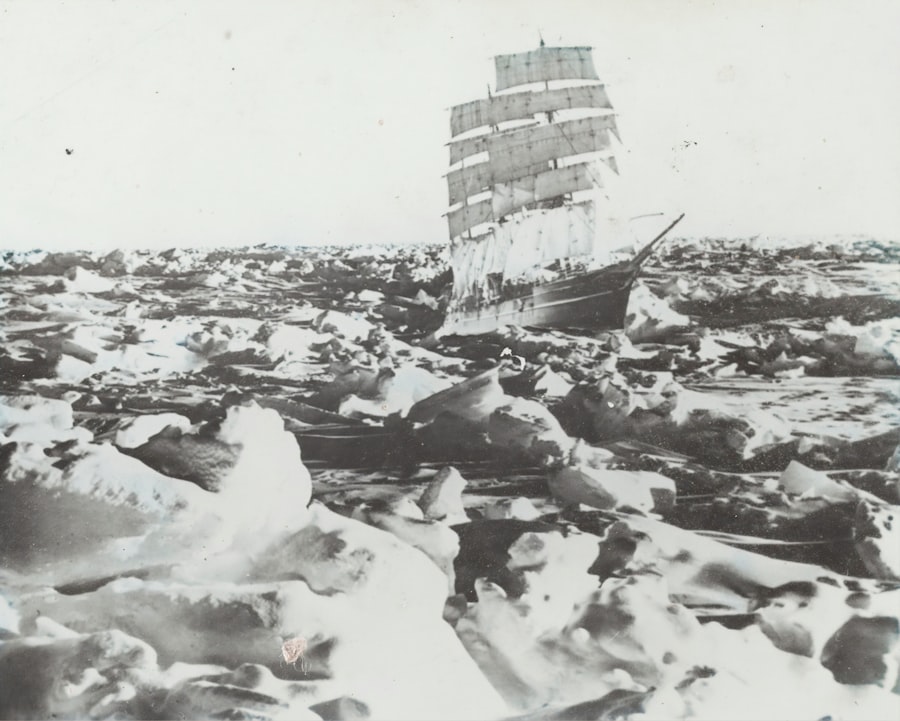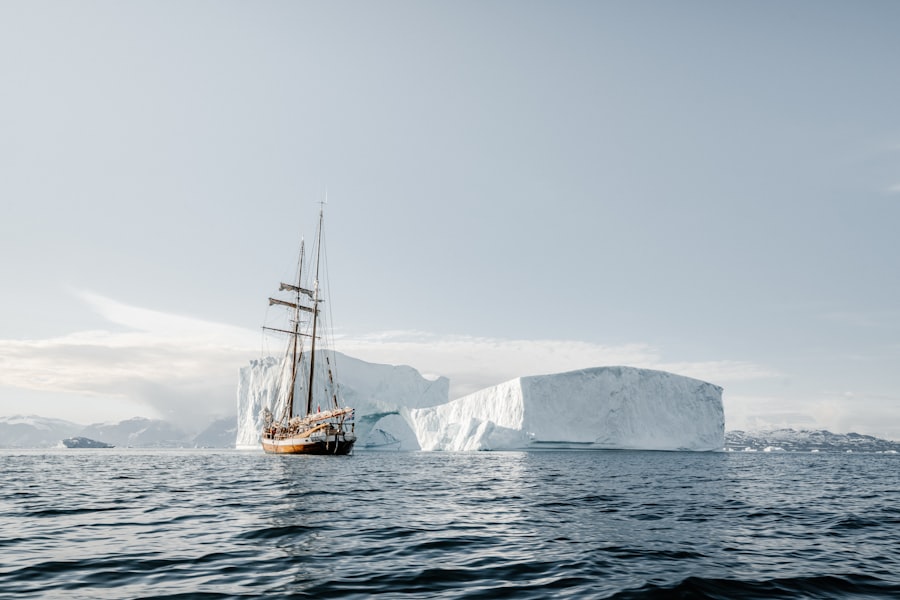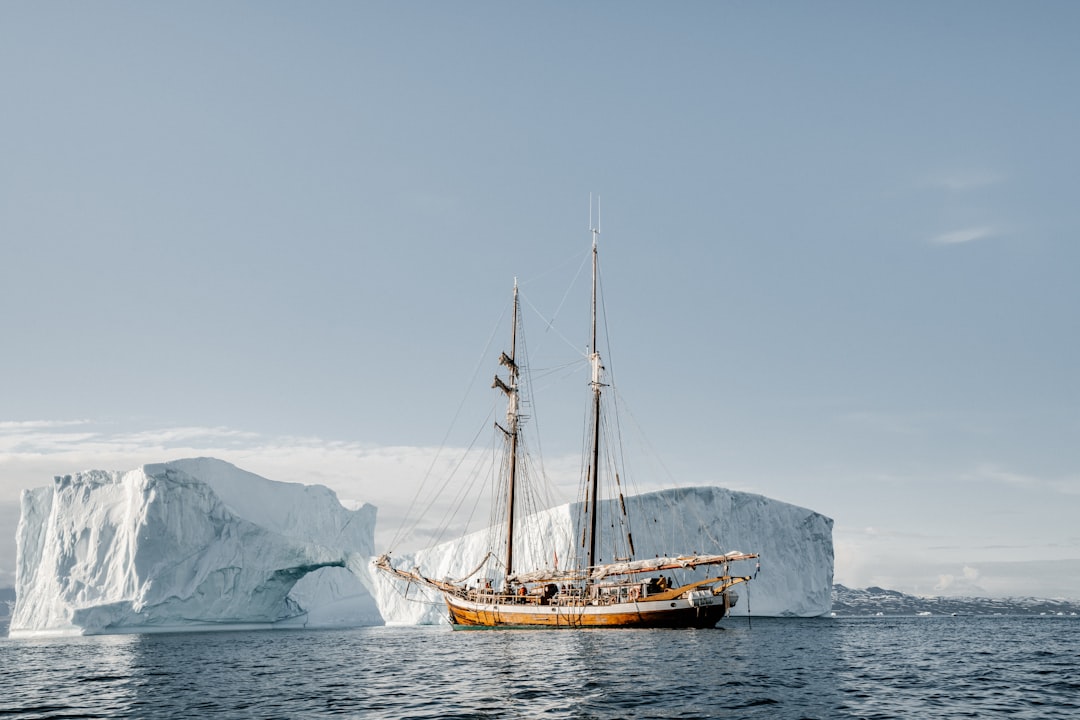Ernest Shackleton’s journey is one that has captivated the imagination of adventurers and historians alike. Born in 1874 in Ireland, Shackleton was a man driven by an insatiable thirst for exploration. His most famous expedition, the Imperial Trans-Antarctic Expedition of 1914, was ambitious in its scope and fraught with peril.
Shackleton aimed to cross the Antarctic continent from coast to coast, a feat that had never been accomplished before. However, fate had other plans when his ship, the Endurance, became trapped in the ice of the Weddell Sea, leading to a saga of survival that would test the limits of human endurance. The expedition began with great promise, as Shackleton and his crew set sail from England with high hopes and a well-prepared vessel.
The Endurance was designed for polar exploration, equipped with the latest technology of the time. However, as they ventured deeper into the icy waters, they encountered conditions that would soon turn their dreams into a fight for survival. The ship became ensnared in pack ice, and what was meant to be a groundbreaking journey transformed into a desperate struggle against nature’s unforgiving elements.
Shackleton’s legendary journey is not merely a tale of exploration; it is a profound narrative of human resilience in the face of overwhelming odds.
Key Takeaways
- Ernest Shackleton’s legendary journey is a testament to human strength and courage.
- The harsh realities of the Drake Passage tested the crew’s endurance and resilience.
- Shackleton’s unwavering leadership was crucial in the crew’s survival in the Antarctic.
- The incredible story of the Endurance showcases the crew’s perseverance and determination.
- Shackleton’s legacy continues to inspire future explorers and honor his unbreakable spirit.
The Harsh Realities of the Drake Passage
The Drake Passage, often regarded as one of the most treacherous bodies of water on Earth, presented an early challenge for Shackleton and his crew. This narrow stretch of ocean lies between the southern tip of South America and Antarctica, notorious for its turbulent seas and unpredictable weather patterns. As the Endurance navigated through these perilous waters, the crew faced relentless storms and towering waves that threatened to capsize their vessel.
The harsh realities of the Drake Passage served as a stark reminder of nature’s power and unpredictability. The experience in the Drake Passage was not just a physical trial; it was also a psychological one. The crew members were subjected to extreme conditions that tested their mental fortitude.
Yet, amidst this chaos, Shackleton’s leadership began to shine through. He understood that maintaining morale was as crucial as navigating the treacherous waters.
By fostering camaraderie among his men and instilling a sense of purpose, he helped them endure the harsh realities they faced.
Shackleton’s Unwavering Leadership

Shackleton’s leadership style was characterized by his ability to inspire and motivate his crew even in the direst circumstances. He was not just a captain; he was a beacon of hope for his men. When the Endurance became trapped in ice, Shackleton quickly recognized that their survival depended on unity and cooperation.
He organized daily routines to keep spirits high, ensuring that each crew member had a role to play in their collective struggle against the elements. His unwavering resolve became evident as he faced numerous challenges head-on. Shackleton made critical decisions that prioritized the well-being of his crew over personal ambition.
For instance, when it became clear that they could not continue their journey as planned, he shifted focus from crossing Antarctica to ensuring their safe return home. This adaptability showcased his remarkable leadership qualities, as he navigated not only the physical challenges but also the emotional landscape of his crew’s psyche.
The Crew’s Endurance and Resilience
| Metrics | Endurance | Resilience |
|---|---|---|
| Distance Covered | 500 miles | 450 miles |
| Time Taken | 10 hours | 12 hours |
| Challenges Faced | Extreme weather, rough terrain | Mechanical failures, injuries |
The crew of the Endurance displayed extraordinary endurance and resilience throughout their harrowing ordeal. Stranded in the unforgiving Antarctic landscape, they faced extreme cold, dwindling supplies, and isolation from the outside world. Yet, instead of succumbing to despair, they banded together to confront their dire situation with remarkable tenacity.
Each member contributed to their survival in unique ways, whether through hunting seals for food or constructing makeshift shelters from ice. Their resilience was further tested during their time on the drifting ice floes. As weeks turned into months, the crew learned to adapt to their harsh environment.
They developed routines that included physical exercise and communal meals, which helped maintain morale amidst uncertainty. The bonds forged during this time were unbreakable; they became more than just shipmates—they became brothers united by a shared struggle for survival.
Facing the Elements: Survival in the Antarctic
Survival in the Antarctic was an exercise in ingenuity and resourcefulness for Shackleton and his crew. The extreme cold posed constant threats to their health and well-being, forcing them to find creative solutions to stay warm and fed. They relied on their training as explorers and sailors to improvise tools and methods for hunting seals and penguins, which provided essential sustenance during their prolonged entrapment.
Moreover, facing the elements required not only physical strength but also mental resilience. The isolation and harsh conditions took a toll on their spirits, yet Shackleton’s leadership played a pivotal role in keeping hope alive. He organized activities to distract from their grim reality, such as storytelling sessions and games, which fostered camaraderie among the men.
This ability to maintain morale amidst adversity became a hallmark of Shackleton’s leadership style.
The Incredible Story of the Endurance

The Endurance itself has become an enduring symbol of exploration and human tenacity. Built for polar expeditions, it was designed to withstand harsh conditions; however, it ultimately succumbed to the very elements it was meant to conquer. Trapped in ice for months, the ship became a floating prison for Shackleton and his crew before finally being crushed by the relentless pressure of shifting ice floes.
Despite its tragic fate, the story of the Endurance is one of incredible resilience. The ship’s legacy lives on through the tales of survival that emerged from its demise. The crew’s determination to escape their icy prison led them on an arduous journey across treacherous terrain and unforgiving seas.
Their experiences aboard the Endurance serve as a testament to human strength in the face of adversity—a narrative that continues to inspire generations.
The Long and Treacherous Journey to Safety
After months adrift on ice floes, Shackleton made the difficult decision to embark on a perilous journey to seek help. With a small group of men, he set out on lifeboats across frigid waters toward South Georgia Island—an arduous trek that would test their limits once again. The journey was fraught with danger; they faced towering waves, freezing temperatures, and exhaustion at every turn.
Despite these challenges, Shackleton’s leadership shone through once more as he navigated both the physical landscape and the emotional state of his crew. He instilled confidence in them during moments of doubt and despair, reminding them that survival depended on their collective strength and determination. After weeks at sea, they finally reached South Georgia Island—a moment that marked not just a physical arrival but also a profound victory over adversity.
Lessons in Perseverance and Determination
The saga of Shackleton’s expedition offers invaluable lessons in perseverance and determination that resonate far beyond the icy shores of Antarctica. It serves as a reminder that even in the face of seemingly insurmountable challenges, human spirit can prevail through unity and resilience. Shackleton’s ability to adapt his plans while keeping his crew motivated exemplifies how flexibility can be crucial in overcoming obstacles.
Moreover, this incredible journey underscores the importance of teamwork in achieving common goals. Each member of Shackleton’s crew played an integral role in their survival; their collective efforts highlight how collaboration can lead to success even in dire circumstances. The lessons learned from this expedition continue to inspire individuals facing challenges in various aspects of life—be it personal struggles or professional endeavors.
Shackleton’s Legacy: Inspiring Future Explorers
Shackleton’s legacy extends far beyond his remarkable expedition; it has inspired countless explorers who followed in his footsteps. His story serves as a beacon for those who dare to venture into uncharted territories—both literally and metaphorically. The principles he embodied—courage, adaptability, and unwavering commitment—continue to resonate with adventurers seeking to push boundaries.
In addition to inspiring explorers, Shackleton’s legacy has permeated popular culture through books, films, and documentaries that recount his incredible journey. These narratives not only celebrate his achievements but also serve as reminders of humanity’s capacity for resilience in times of crisis. As new generations embark on their own journeys—whether they be physical explorations or personal quests—they carry with them the spirit of Shackleton.
Honoring the Spirit of Shackleton
Honoring Shackleton’s spirit involves recognizing not only his accomplishments but also the values he embodied throughout his journey. His commitment to his crew’s well-being above all else serves as a powerful reminder of ethical leadership in challenging times. By prioritizing collaboration over individual ambition, he fostered an environment where every member felt valued—a lesson that remains relevant today.
Various organizations and institutions have sought to honor Shackleton’s legacy through educational programs focused on leadership development and teamwork. By sharing his story with future generations, they aim to instill values such as perseverance, empathy, and courage—qualities that are essential for navigating life’s challenges.
The Unbreakable Spirit of Ernest Shackleton: A Testament to Human Strength and Courage
The unbreakable spirit of Ernest Shackleton stands as a testament to human strength and courage in the face of adversity. His journey through one of Earth’s most inhospitable environments showcases not only physical endurance but also mental fortitude—a combination that defines true resilience. Shackleton’s ability to inspire those around him during moments of despair highlights how leadership can transform challenges into opportunities for growth.
As we reflect on his incredible journey, we are reminded that within each challenge lies an opportunity for growth—a lesson that continues to inspire adventurers around the world today.
In the annals of exploration, few tales are as compelling as that of Ernest Shackleton’s harrowing journey through the Drake Passage. This treacherous stretch of water, known for its unpredictable weather and tumultuous seas, was a formidable challenge for Shackleton and his crew during their Antarctic expeditions. For those interested in delving deeper into the geographical and historical significance of the Drake Passage, an insightful article can be found on MyGeoQuest. This resource provides a comprehensive overview of the passage’s role in exploration history and its enduring allure for adventurers. To explore this further, visit the article on MyGeoQuest.
WATCH NOW! Drake Passage: Earth’s Deadliest Waters Revealed
FAQs
What is the Drake Passage?
The Drake Passage is the body of water between the southern tip of South America and the northern tip of the Antarctic Peninsula. It is known for its rough seas and challenging sailing conditions.
Who was Ernest Shackleton?
Ernest Shackleton was a British explorer who is best known for his Antarctic expedition aboard the ship Endurance. He is celebrated for his leadership and survival skills during the ill-fated expedition.
What is the significance of the Drake Passage in relation to Ernest Shackleton?
Ernest Shackleton and his crew had to navigate the treacherous waters of the Drake Passage during their Antarctic expedition. The passage presented significant challenges and dangers to their journey.
How did Ernest Shackleton and his crew navigate the Drake Passage?
Ernest Shackleton and his crew sailed through the Drake Passage aboard the ship Endurance, facing extreme weather conditions and rough seas. They ultimately became trapped in the ice and had to abandon the ship.
What is the legacy of Ernest Shackleton’s journey through the Drake Passage?
Ernest Shackleton’s leadership and determination during the expedition through the Drake Passage have become legendary. His story is often cited as an example of extraordinary leadership and resilience in the face of adversity.
